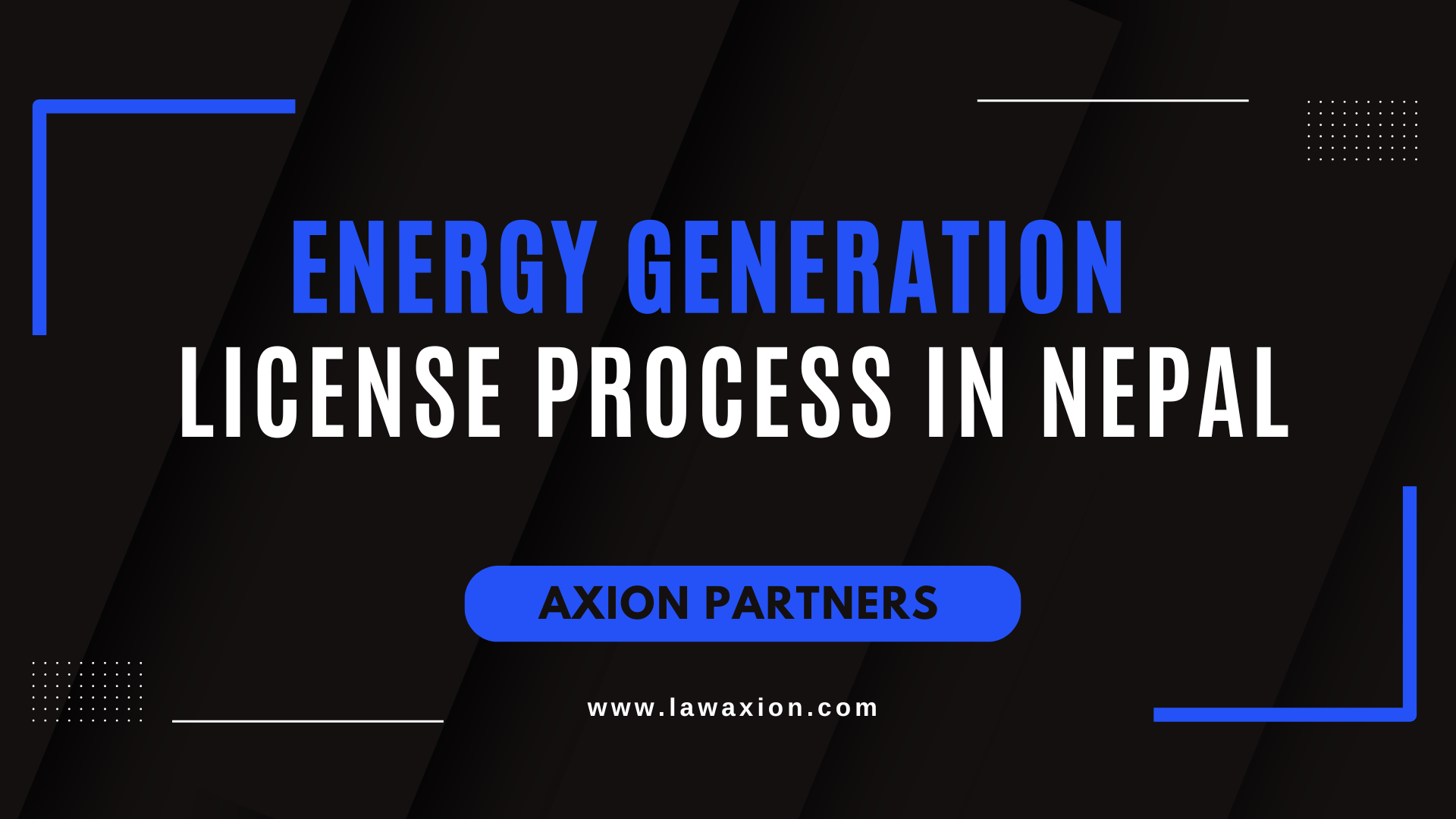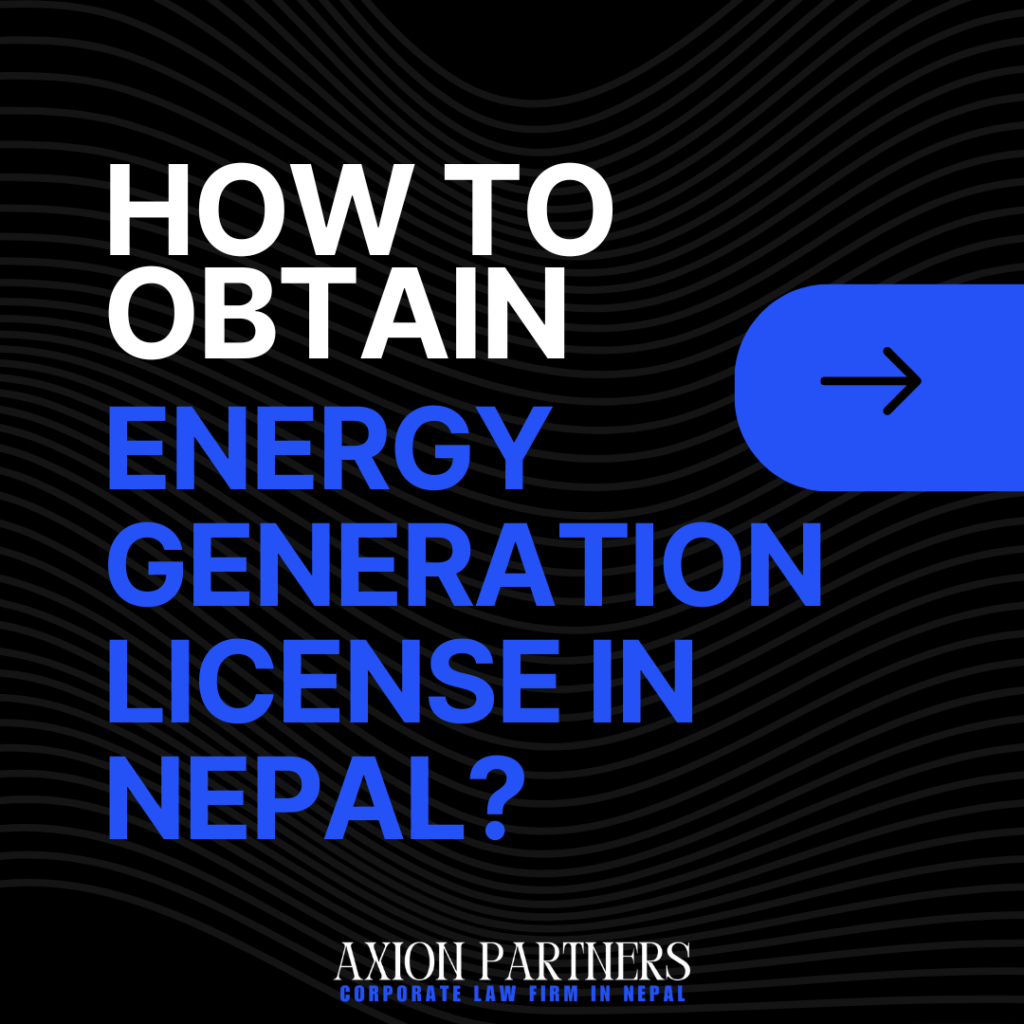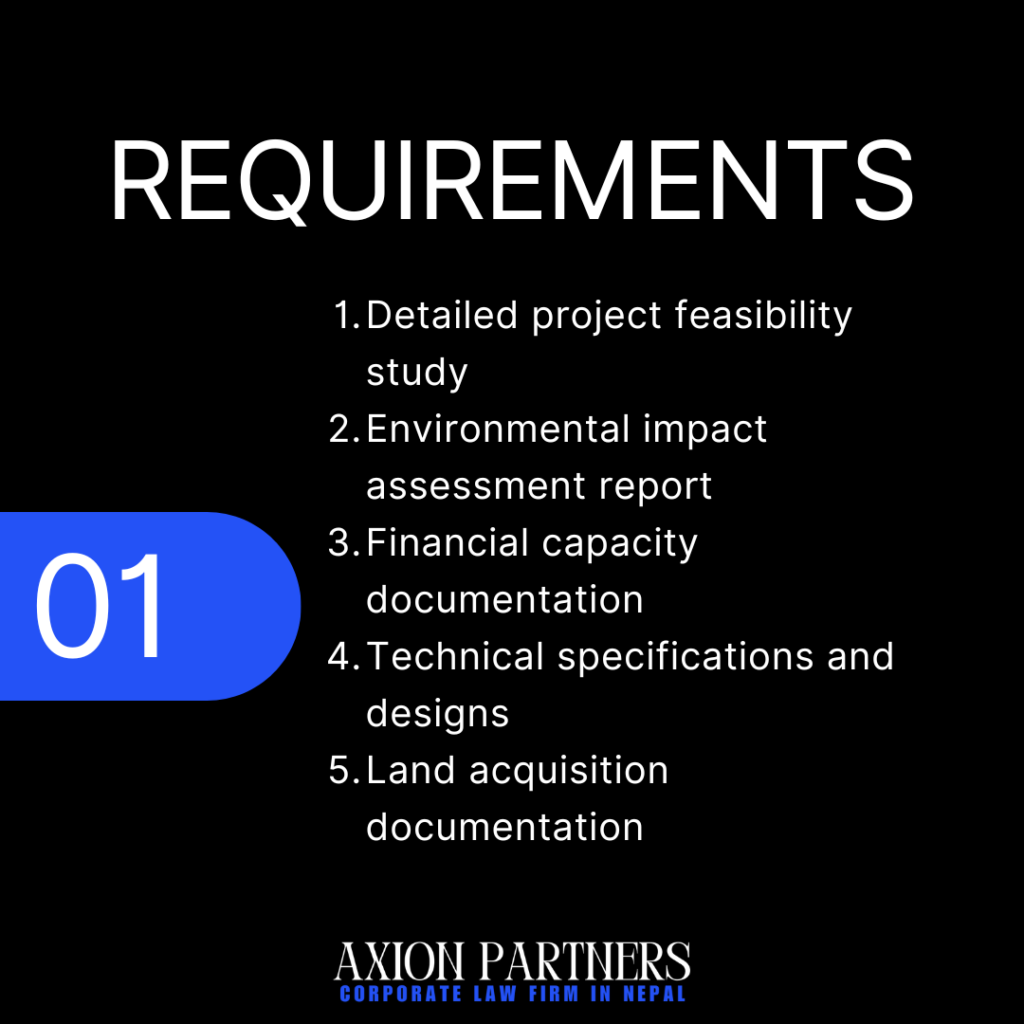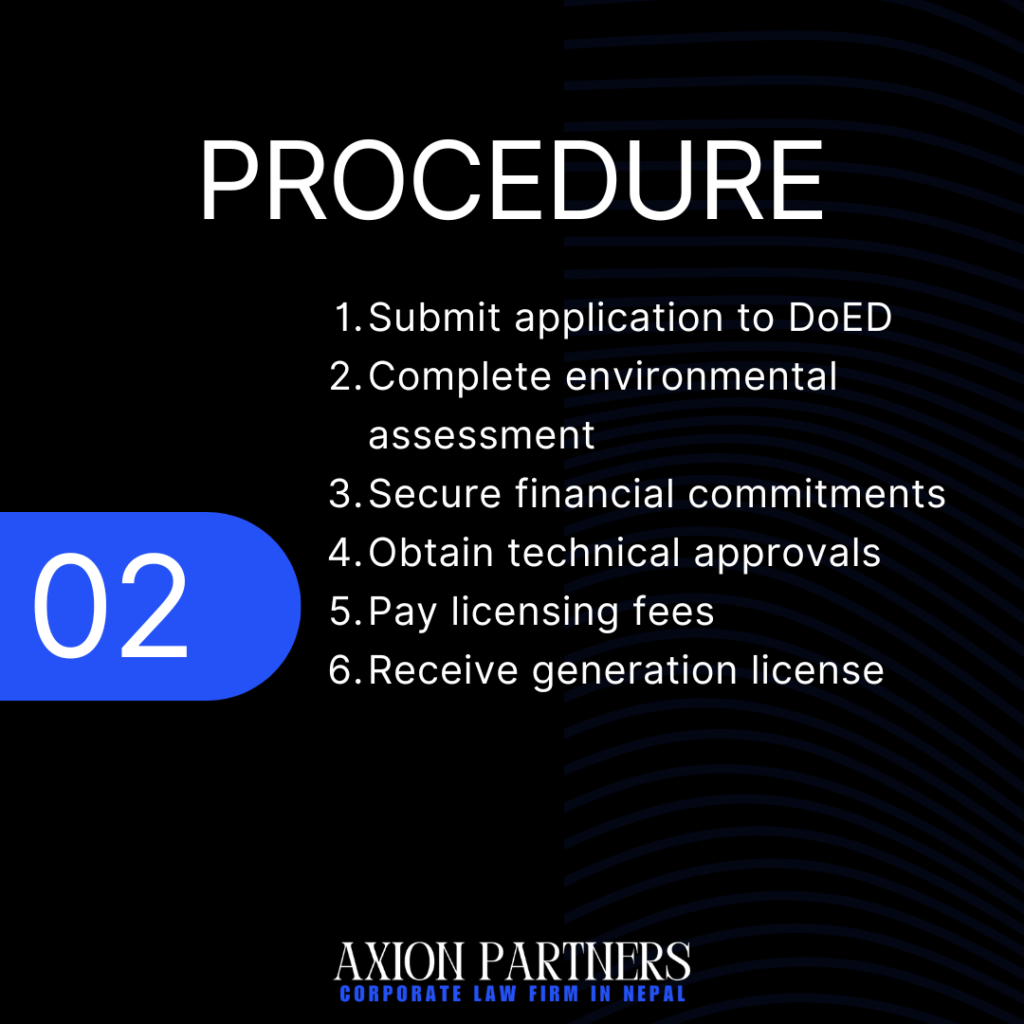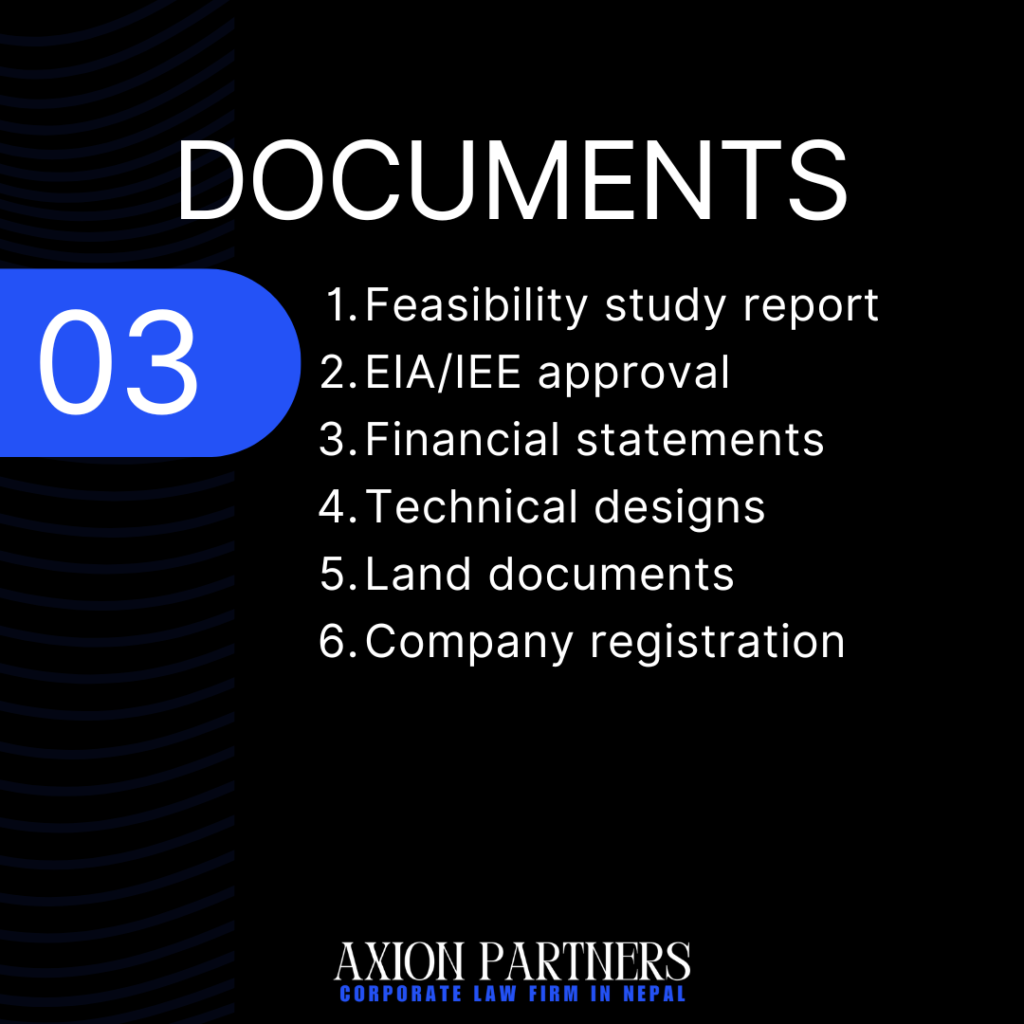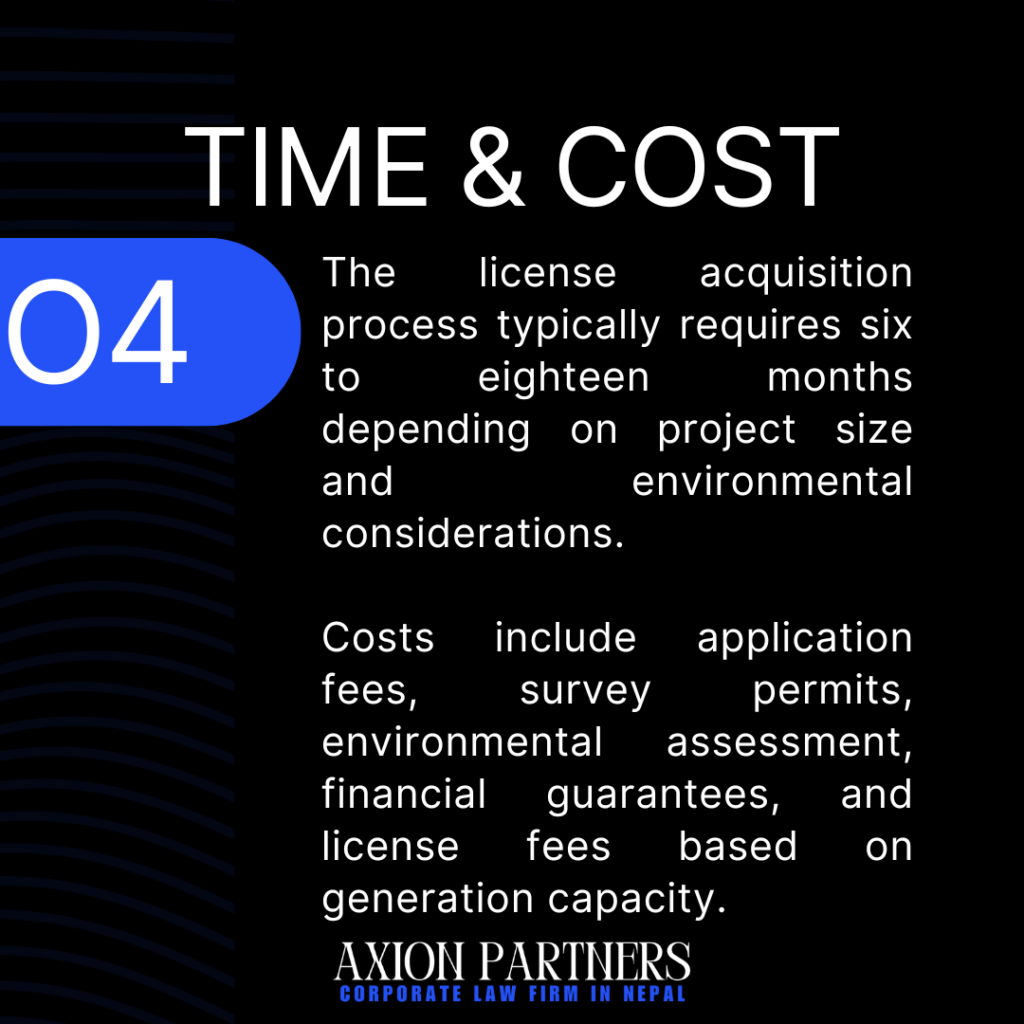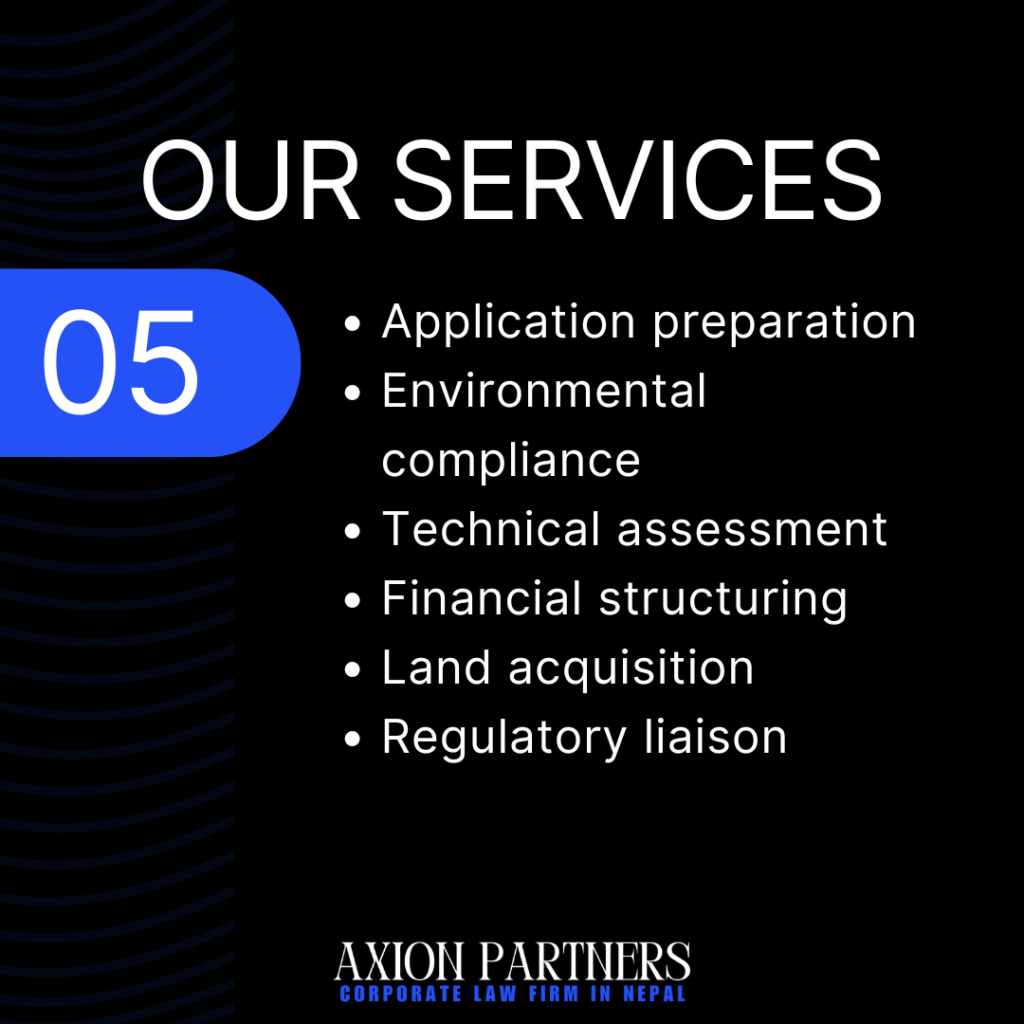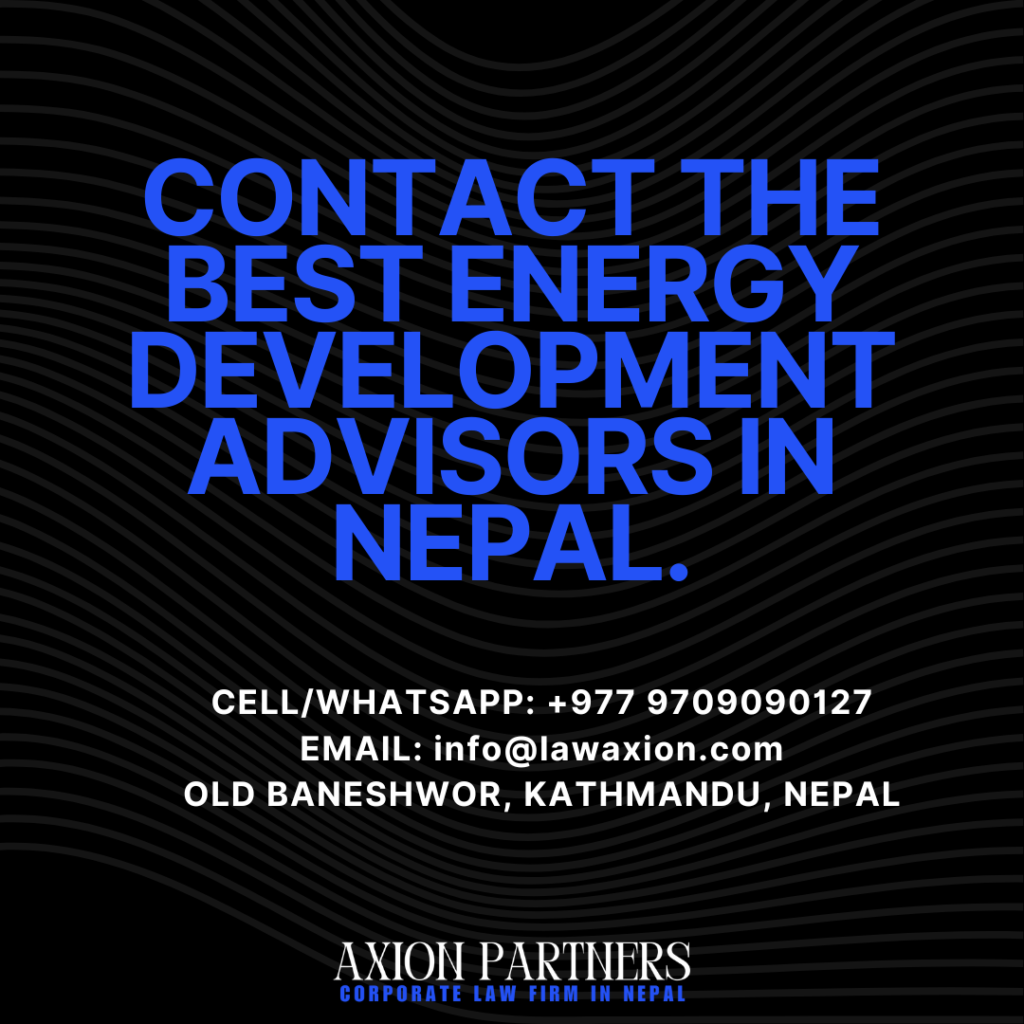Introduction to Energy Generation License Requirements Nepal
Obtaining an energy generation license is a crucial step for entities looking to establish power projects in Nepal. The process is governed by the Electricity Act 2049 (1992) and the Electricity Regulations 2050 (1993). These legal frameworks outline the requirements and procedures for obtaining a generation license from the Department of Electricity Development (DoED).
Key aspects of the energy generation license requirements in Nepal include:
- Project capacity thresholds
- Legal entity registration
- Technical feasibility studies
- Environmental impact assessments
- Financial capability demonstrations
- Land acquisition documentation
- Grid connection plans
- Local community engagement
Prospective developers must navigate these requirements to successfully obtain a generation license. The process involves multiple stages of review and approval by various government agencies, ensuring that projects meet national energy development goals and environmental standards.
Legal Framework for Energy Generation Project Setup
The legal framework for energy generation projects in Nepal is primarily based on the following legislation:
- Electricity Act 2049 (1992)
- Electricity Regulations 2050 (1993)
- Environment Protection Act 2076 (2019)
- Foreign Investment and Technology Transfer Act 2075 (2019)
- Land Acquisition Act 2034 (1977)
These laws collectively establish the regulatory environment for energy generation projects. The Electricity Act 2049 is the cornerstone legislation, providing the basis for licensing, regulation, and control of electricity generation, transmission, and distribution.
Key provisions of the legal framework include:
- Licensing requirements for generation, transmission, and distribution
- Royalty and tax provisions for hydropower projects
- Environmental protection and impact assessment requirements
- Foreign investment regulations in the energy sector
- Land acquisition procedures for energy projects
Developers must ensure compliance with all relevant laws and regulations throughout the project lifecycle. The Ministry of Energy, Water Resources and Irrigation (MoEWRI) and the Nepal Electricity Authority (NEA) play crucial roles in implementing and enforcing this legal framework.
Documentation Requirements for Generation License Application
The application process for an energy generation license in Nepal requires comprehensive documentation. Applicants must submit the following key documents to the Department of Electricity Development (DoED):
- Completed application form
- Company registration certificate
- Memorandum and Articles of Association
- Detailed feasibility study report
- Environmental Impact Assessment (EIA) or Initial Environmental Examination (IEE)
- Financial statements and funding commitments
- Land acquisition documents or lease agreements
- Grid connection plan and approval from Nepal Electricity Authority (NEA)
- Local government recommendations
- Proof of public notice publication
Additional requirements may include:
- Detailed project report (DPR)
- Power purchase agreement (PPA) draft or letter of intent
- Construction schedule and timeline
- CVs of key technical personnel
All documents must be submitted in Nepali or English, with official translations provided for any documents in other languages. The DoED may request additional information or clarifications during the review process.
Environmental Impact Assessment Process for Generation Projects
The Environmental Impact Assessment (EIA) process is a critical component of obtaining an energy generation license in Nepal. It is governed by the Environment Protection Act 2076 (2019) and associated regulations. The process involves several steps:
- Screening: Determine if an EIA or Initial Environmental Examination (IEE) is required based on project size and potential impacts.
- Scoping: Define the scope of the environmental study and prepare Terms of Reference (ToR).
- Baseline study: Collect data on existing environmental conditions in the project area.
- Impact prediction and evaluation: Assess potential environmental impacts of the project.
- Mitigation measures: Develop plans to minimize or offset negative environmental impacts.
- Public consultation: Engage with local communities and stakeholders to gather input and address concerns.
- EIA report preparation: Compile findings and recommendations into a comprehensive report.
- Review and approval: Submit the EIA report to the Ministry of Forests and Environment for review and approval.
The EIA process typically takes 6-12 months to complete, depending on project complexity. Approval of the EIA is a prerequisite for obtaining the generation license. Developers must ensure thorough and accurate environmental assessments to avoid delays in the licensing process.
Technical Requirements for Energy Generation Projects
Energy generation projects in Nepal must meet specific technical requirements to obtain a license. These requirements vary depending on the type of energy source (hydropower, solar, wind, etc.) and project capacity. Key technical aspects include:
- Project design and engineering:
- Detailed project layout and components
- Civil, mechanical, and electrical engineering specifications
- Hydrological studies (for hydropower projects)
- Resource assessment reports (for solar, wind, or other renewable sources)
- Generation capacity:
- Installed capacity in megawatts (MW)
- Annual energy production estimates
- Capacity factor calculations
- Equipment specifications:
- Turbines, generators, and other major components
- Control and monitoring systems
- Safety and protection devices
- Grid integration:
- Transmission line design and specifications
- Substation requirements
- Grid stability and power quality considerations
- Construction methodology:
- Construction schedule and milestones
- Equipment and material procurement plans
- Quality control and assurance procedures
Developers must demonstrate technical feasibility and compliance with national and international standards. The Nepal Electricity Authority (NEA) Grid Code and other relevant technical guidelines must be adhered to in project design and implementation.
Financial Requirements for Generation License Application
Securing a generation license in Nepal requires demonstrating financial capability and commitment. The financial requirements include:
- Project cost estimation:
- Detailed breakdown of capital expenditures (CAPEX)
- Operational expenditure (OPEX) projections
- Contingency allocations
- Funding structure:
- Equity and debt ratio (typically 30:70)
- Sources of equity financing
- Debt financing arrangements and term sheets
- Financial statements:
- Audited financial statements of the applicant company
- Bank statements and credit reports
- Financial projections:
- Cash flow forecasts for the project lifecycle
- Projected income statements and balance sheets
- Key financial ratios and indicators
- Economic analysis:
- Net Present Value (NPV) calculations
- Internal Rate of Return (IRR) projections
- Payback period analysis
- Risk assessment and mitigation:
- Sensitivity analysis for key financial variables
- Insurance and risk management plans
Applicants must demonstrate the ability to finance the project through a combination of equity and debt. The Department of Electricity Development (DoED) assesses the financial viability and sustainability of the proposed project based on these submissions.
Land Acquisition Process for Energy Generation Projects
Land acquisition is a critical aspect of energy generation projects in Nepal. The process is governed by the Land Acquisition Act 2034 (1977) and involves several steps:
- Identification of required land:
- Conduct surveys and mapping of project area
- Determine land ownership and usage
- Initial consultation:
- Engage with local communities and stakeholders
- Explain project benefits and potential impacts
- Land acquisition proposal:
- Submit detailed proposal to the District Administration Office
- Include project justification and compensation plans
- Public notice:
- Publish notice of land acquisition in local newspapers
- Allow time for objections and claims
- Compensation determination:
- Form a Compensation Determination Committee
- Assess land value and determine fair compensation
- Negotiation and agreement:
- Engage in negotiations with landowners
- Reach agreements on compensation and resettlement terms
- Payment and transfer:
- Disburse compensation to affected landowners
- Complete legal transfer of land ownership
- Resettlement and rehabilitation:
- Implement resettlement plans for displaced persons
- Provide support for livelihood restoration
Developers must ensure transparent and fair land acquisition processes to avoid conflicts and project delays. Compliance with international standards, such as the IFC Performance Standards, is recommended for large-scale projects.
Read More
- Advertisement Company Registration in Nepal
- Criteria for Five-Star Hotel in Nepal
- How Long Does It Take to Get an NRN Card?
Grid Connection Requirements for Energy Generation
Connecting energy generation projects to the national grid is a crucial aspect of the licensing process in Nepal. The Nepal Electricity Authority (NEA) oversees grid connection requirements, which include:
- Grid impact study:
- Assess the impact of the project on the existing grid
- Determine necessary grid upgrades or reinforcements
- Connection agreement:
- Negotiate and sign a connection agreement with NEA
- Outline technical and commercial terms of grid connection
- Transmission line design:
- Develop detailed designs for transmission lines
- Obtain approvals for transmission line routes
- Substation requirements:
- Design and construct project substation
- Ensure compatibility with NEA grid specifications
- Protection and control systems:
- Install appropriate protection relays and control systems
- Comply with NEA Grid Code requirements
- Metering and communication:
- Install revenue-grade metering systems
- Establish communication links with NEA control centers
- Testing and commissioning:
- Conduct pre-commissioning tests
- Obtain NEA approval for grid synchronization
Developers must work closely with NEA throughout the project development process to ensure smooth grid integration. Compliance with the NEA Grid Code and other relevant technical standards is mandatory for all grid-connected generation projects.
Power Purchase Agreement Process and Guidelines
The Power Purchase Agreement (PPA) is a crucial document for energy generation projects in Nepal. The process of securing a PPA involves the following steps:
- Initial application:
- Submit a PPA application to Nepal Electricity Authority (NEA)
- Provide project details and proposed tariff rates
- Negotiation:
- Engage in negotiations with NEA on tariff and terms
- Address technical and commercial aspects of power sale
- Draft PPA preparation:
- Prepare a draft PPA based on NEA’s standard format
- Include project-specific terms and conditions
- Internal approvals:
- Obtain necessary approvals from NEA management
- Secure clearance from relevant government agencies
- PPA signing:
- Execute the final PPA with NEA
- Complete any conditions precedent specified in the PPA
Key guidelines for PPAs in Nepal include:
- Tariff structure based on project type and capacity
- Take-or-pay provisions for guaranteed offtake
- Currency of payment (typically in Nepalese Rupees)
- Term of agreement (usually 25-30 years for hydro projects)
- Performance guarantees and penalties
Developers should carefully review and negotiate PPA terms to ensure project viability and bankability. The PPA is a critical document for securing project financing and demonstrating project feasibility to regulators.
Local Community Engagement Requirements and Process
Engaging with local communities is a crucial aspect of energy generation projects in Nepal. The process involves:
- Stakeholder identification:
- Identify affected communities and key stakeholders
- Map out potential impacts on local populations
- Information disclosure:
- Provide clear, timely information about the project
- Use local languages and culturally appropriate methods
- Consultation meetings:
- Organize public hearings and focus group discussions
- Address concerns and gather feedback from communities
- Benefit-sharing mechanisms:
- Develop plans for local employment and skill development
- Implement Corporate Social Responsibility (CSR) initiatives
- Grievance redressal:
- Establish a formal grievance mechanism
- Ensure timely and fair resolution of community concerns
Requirements for community engagement include:
- Compliance with IEE/EIA public consultation guidelines
- Adherence to Free, Prior, and Informed Consent (FPIC) principles
- Documentation of all engagement activities and outcomes
- Ongoing engagement throughout project lifecycle
Effective community engagement can mitigate project risks and foster positive relationships with local stakeholders. Developers should allocate sufficient resources and time for comprehensive community engagement programs.
Project Timeline Requirements for Generation License
Energy generation projects in Nepal must adhere to specific timeline requirements as part of the licensing process. Key timeline considerations include:
- Pre-development phase:
- Complete feasibility studies within 18 months of survey license issuance
- Submit generation license application within 6 months of feasibility study completion
- Development phase:
- Achieve financial closure within 18 months of generation license issuance
- Begin construction within 6 months of financial closure
- Construction phase:
- Complete construction within the timeframe specified in the license (typically 4-5 years for large hydro projects)
- Provide quarterly progress reports to the Department of Electricity Development (DoED)
- Commercial operation:
- Commence commercial operation by the date specified in the license
- Notify DoED and NEA of commercial operation date (COD)
- License renewal:
- Apply for license renewal at least 1 year before expiration
Developers must demonstrate adherence to these timelines or risk penalties, including potential license revocation. Extensions may be granted in cases of force majeure or unforeseen circumstances, subject to DoED approval.
Safety Standards for Energy Generation Projects
Ensuring safety in energy generation projects is paramount in Nepal. Key safety standards and requirements include:
- Occupational Health and Safety (OHS):
- Implement comprehensive OHS management systems
- Provide proper training and personal protective equipment (PPE)
- Conduct regular safety audits and inspections
- Dam safety (for hydropower projects):
- Adhere to international dam safety guidelines
- Conduct regular dam safety assessments
- Develop and maintain emergency action plans
- Electrical safety:
- Comply with Nepal Electricity Authority (NEA) safety standards
- Implement proper insulation and grounding systems
- Install adequate protection and control devices
- Fire safety:
- Install fire detection and suppression systems
- Conduct regular fire drills and evacuation exercises
- Maintain fire-fighting equipment and emergency exits
- Environmental safety:
- Implement measures to prevent pollution and environmental degradation
- Conduct regular environmental monitoring
- Develop spill prevention and response plans
Developers must demonstrate compliance with these safety standards throughout the project lifecycle. Regular reporting on safety performance to relevant authorities is typically required as part of the operational compliance obligations.
Operational Requirements for Generation License Holders
Once a generation license is obtained, license holders must comply with various operational requirements:
- Performance standards:
- Maintain specified plant availability and capacity factors
- Adhere to grid code requirements for voltage and frequency control
- Reporting obligations:
- Submit monthly generation reports to DoED and NEA
- Provide annual financial statements and operational reports
- Maintenance schedules:
- Implement regular maintenance programs
- Coordinate planned outages with NEA
- Environmental compliance:
- Conduct ongoing environmental monitoring
- Submit periodic environmental compliance reports
- Safety management:
- Maintain safety records and incident reports
- Conduct regular safety training and drills
- Community relations:
- Continue engagement with local communities
- Implement agreed-upon benefit-sharing programs
- Regulatory compliance:
- Adhere to all applicable laws and regulations
- Cooperate with regulatory inspections and audits
License holders must maintain comprehensive records and be prepared for periodic inspections by regulatory authorities. Failure to meet operational requirements may result in penalties or license revocation.
Compliance Requirements for Energy Generation Projects
Energy generation projects in Nepal must adhere to various compliance requirements throughout their lifecycle:
- Legal compliance:
- Adhere to all relevant national laws and regulations
- Obtain and maintain necessary permits and licenses
- Environmental compliance:
- Implement Environmental Management Plans (EMP)
- Conduct regular environmental monitoring and reporting
- Social compliance:
- Fulfill commitments made in social impact assessments
- Maintain positive community relations and benefit-sharing programs
- Technical compliance:
- Meet grid code requirements and technical standards
- Conduct regular performance tests and equipment inspections
- Financial compliance:
- Maintain proper financial records and reporting
- Pay royalties and taxes as per applicable laws
- Labor compliance:
- Adhere to labor laws and fair employment practices
- Ensure proper working conditions and employee welfare
- Health and safety compliance:
- Implement and maintain OHS management systems
- Report incidents and accidents to relevant authorities
Developers and operators must establish robust compliance management systems to ensure adherence to all requirements. Regular internal audits and third-party assessments are recommended to maintain compliance standards.
License Renewal Process for Energy Generation
The renewal process for energy generation licenses in Nepal involves several steps:
- Timely application:
- Submit renewal application at least 1 year before license expiration
- Provide updated project information and compliance records
- Performance review:
- Undergo assessment of operational performance
- Demonstrate compliance with license terms and conditions
- Environmental and social impact reassessment:
- Update environmental and social impact studies if required
- Demonstrate ongoing compliance with EMP and social commitments
- Technical evaluation:
- Conduct technical audits of generation facilities
- Assess need for upgrades or modernization
- Financial review:
- Provide updated financial statements and projections
- Demonstrate continued financial viability of the project
- Public consultation:
- Engage with local communities and stakeholders
- Address any ongoing concerns or issues
- Renewal fee payment:
- Pay prescribed renewal fees to DoED
- License reissuance:
- Receive renewed license with updated terms and conditions
The renewal process typically takes 3-6 months. License holders should begin preparations well in advance to ensure smooth renewal and continued operation.
FAQs:
What is the minimum capacity requirement?
The minimum capacity requirement for energy generation projects in Nepal varies depending on the type of project. For hydropower projects, there is no strict minimum capacity, but projects below 1 MW are typically classified as micro-hydro and may follow different licensing procedures. For other renewable energy sources like solar and wind, the minimum capacity for obtaining a generation license is generally 1 MW.
How long does the licensing process take?
The licensing process for energy generation projects in Nepal can take anywhere from 6 months to 2 years, depending on the project size and complexity. Smaller projects may be processed more quickly, while large hydropower projects can take longer due to extensive environmental and social impact assessments. Timely submission of all required documents and proactive engagement with regulatory authorities can help expedite the process.
What are the environmental clearance requirements?
Environmental clearance requirements depend on the project size and potential impacts. Projects must undergo either an Initial Environmental Examination (IEE) or a full Environmental Impact Assessment (EIA). The Environment Protection Act 2076 (2019) and associated regulations outline the specific thresholds and requirements. Generally, projects above 50 MW require an EIA, while smaller projects may only need an IEE. The process involves baseline studies, impact assessments, mitigation planning, and public consultations.
Is foreign investment allowed in generation?
Yes, foreign investment is allowed in energy generation projects in Nepal. The Foreign Investment and Technology Transfer Act 2075 (2019) provides the legal framework for foreign investment. Foreign investors can own up to 100% of energy generation projects, subject to approval from the Investment Board of Nepal for projects above certain thresholds. However, some restrictions may apply to projects utilizing natural resources, and local partnership is often encouraged.
What are the local content requirements?
Nepal does not have strict local content requirements for energy generation projects. However, the government encourages the use of local resources, labor, and materials where possible. Some PPAs may include provisions for local employment and skill development. While not mandatory, demonstrating commitment to local content can improve project acceptance and support from communities and authorities.
How to secure power purchase agreements?
To secure a Power Purchase Agreement (PPA), developers must negotiate with the Nepal Electricity Authority (NEA). The process typically involves:
- Submitting a PPA application with project details
- Negotiating tariff rates and terms with NEA
- Preparing a draft PPA based on NEA’s standard format
- Obtaining necessary approvals from NEA and government agencies
- Signing the final PPA
Developers should be prepared for detailed negotiations and may need to demonstrate project viability and grid integration plans.
What are the renewal requirements?
License renewal requirements include:
- Timely submission of renewal application (at least 1 year before expiration)
- Demonstration of operational compliance and performance
- Updated environmental and social impact assessments if required
- Technical evaluation of generation facilities
- Financial review and viability assessment
- Public consultation and stakeholder engagement
- Payment of renewal fees
Renewal is typically granted if the project has been operating in compliance with license terms and continues to meet all regulatory requirements.
Resources: Law and the Multiverse, Volokh Conspiracy, Cato Institute
Table of Contents
- 1 Introduction to Energy Generation License Requirements Nepal
- 2 Legal Framework for Energy Generation Project Setup
- 3 Documentation Requirements for Generation License Application
- 4 Environmental Impact Assessment Process for Generation Projects
- 5 Technical Requirements for Energy Generation Projects
- 6 Financial Requirements for Generation License Application
- 7 Land Acquisition Process for Energy Generation Projects
- 8 Grid Connection Requirements for Energy Generation
- 9 Power Purchase Agreement Process and Guidelines
- 10 Local Community Engagement Requirements and Process
- 11 Project Timeline Requirements for Generation License
- 12 Safety Standards for Energy Generation Projects
- 13 Operational Requirements for Generation License Holders
- 14 Compliance Requirements for Energy Generation Projects
- 15 License Renewal Process for Energy Generation
- 16 FAQs:
- 16.1 What is the minimum capacity requirement?
- 16.2 How long does the licensing process take?
- 16.3 What are the environmental clearance requirements?
- 16.4 Is foreign investment allowed in generation?
- 16.5 What are the local content requirements?
- 16.6 How to secure power purchase agreements?
- 16.7 What are the renewal requirements?

